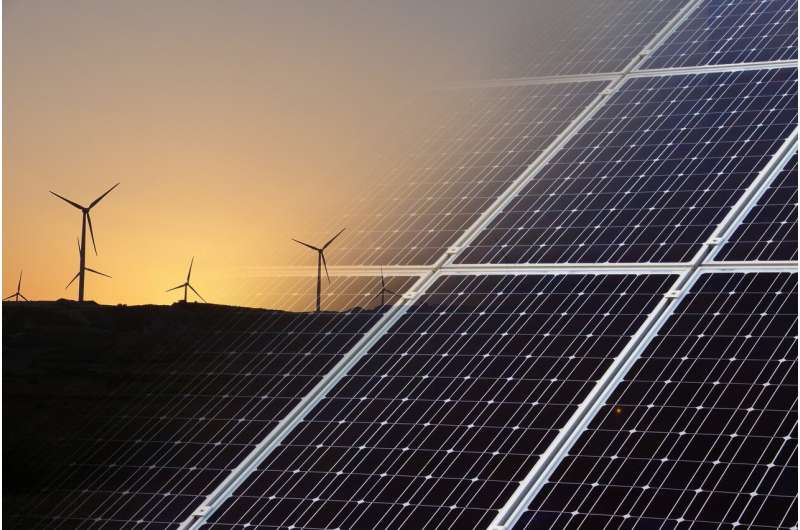New reports document America's clean energy supply chains

Scientists at the U.S. Department of Energy's (DOE's) National Renewable Energy Laboratory (NREL) acted as lead authors on five reports in a larger series designed to strengthen America's clean energy supply chains. The following NREL-authored, topic-specific "deep-dive" studies are intended to inform national policy at the highest level.
Solar power could supply 40% or more of U.S. electricity demand by 2035, dramatically shrinking the carbon footprint of buildings, vehicles, and industrial operations. Global PV materials sourcing and component manufacturing industries are concentrated in a limited number of Asian countries. This report led by NREL's David Feldman explores options to strengthen affordable domestic solar production and support the rapid growth in U.S. PV deployment.
Many components for turbines and wind power infrastructure are produced outside the United States. In addition, the large scale of wind plant parts makes them difficult to produce and transport, with those used for offshore installations presenting even greater logistic challenges. Co-led by NREL's Eric Lantz, this report examines the trade-offs involved in manufacturing the most efficient technologies at the needed volume, while addressing cost, workforce, and logistics issues.
The planned increase in renewable energy generation will require affordable, high-capacity, durable solutions to store solar and wind energy and distribute it through the national electricity grid to homes, businesses, and ever-growing fleets of electric vehicles. Currently, more than 50% of the mineral production for lithium-ion batteries is controlled by a handful of countries, some with questionable environmental and labor practices. This assessment led by NREL's Maggie Mann and Vicky Putsche looks at what measures might help gain U.S. market share and establish more sustainable technologies, facilities, and practices.
Semiconductor manufacturing capacity in the U.S. has steadily decreased over the last few decades, even as demand for use in clean energy power electronics and other applications continues to grow. This report led by NREL's Mann and Putsche addresses both factors, exploring ways to maximize efficiency and production in conventional and wide-bandgap semiconductors while ramping up domestic production.
Water Electrolyzers and Fuel Cells
Although the United States has sufficient domestic resources and facilities to meet current demand for electrolytic hydrogen, reaching U.S. 2050 clean energy goals will require production capacity 200 times greater than what is possible today. This report led by NREL's Mark Ruth looks at key materials, manufacturing capabilities, and workforce needs associated with this emerging technology's applications in the industrial, transportation, and utilities sectors.


















